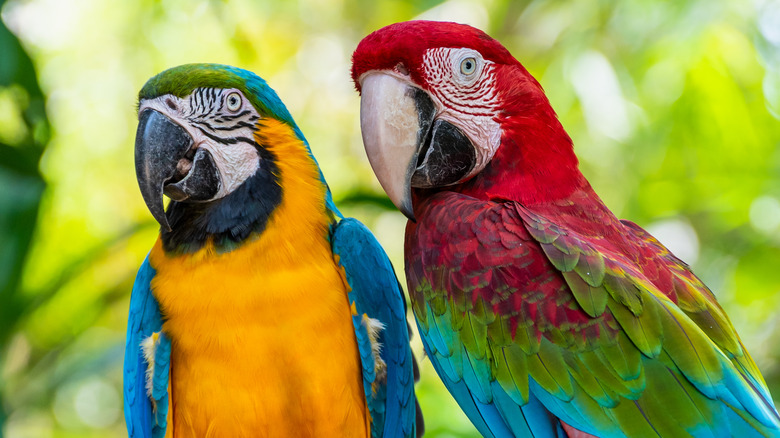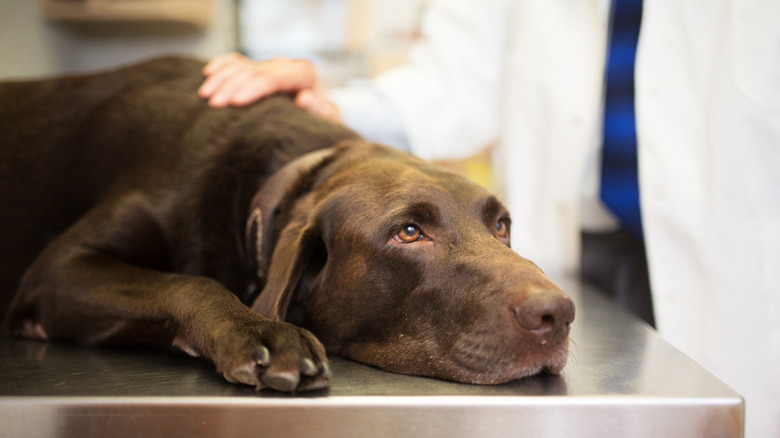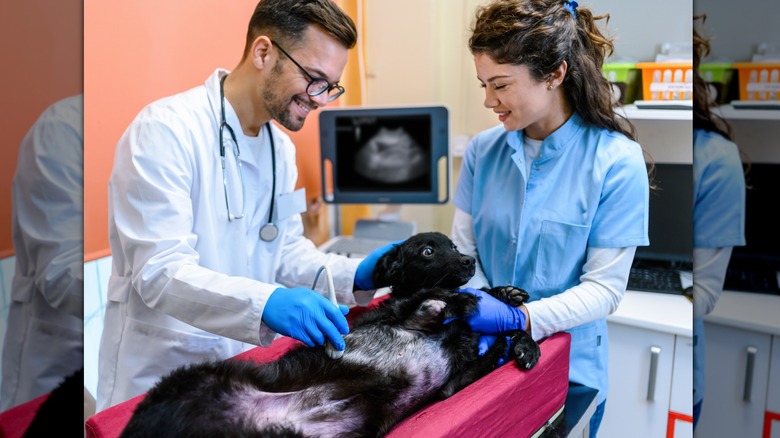Is Pet Insurance Really Worth The Cost?
Cats and dogs get sick, too — why not get them health insurance? A pet insurance policy can help you cover any unexpected accidents or illnesses, helping you provide your pet with the care it deserves, while not putting a strain on your wallet. According to NAPHIA (North American Pet Health Insurance Association), pet insurance is on the rise. As of 2022, 4.4 million pets across North America are insured. So, is pet insurance worth it? Or is it just another needless expense?
Well, it totally depends on the individual. While an owner of multiple dogs might not want to shell out the money it could take to insure each pet, the owner of a cat that requires an emergency operation might find pet insurance to be a literal lifesaver. Of course, not all insurances are created equally. Well-known insurance companies like Geico, Progressive, and Nationwide offer pet insurance, but your required monthly premium depends heavily upon the species, breed, and age of your pet. For example, at Nationwide, coverage for older dogs can be $20 more than for puppies, and almost $30 more than for older cats. As with all things, each apparent pro has its downside, and each con can end up working out for the right person.
Con: Pet insurance maximums can often be misleading
If you aren't well-informed, you can end up paying out of pocket for your pet's procedures, despite your insurance coverage. To avoid making this mistake, knowing the ins and outs of insurance maximums is an absolute must.
While doing your research, you might come across lifetime and annual maximums. This means that your insurance company gives you a maximum dollar amount to spend on your pet over the course of its lifetime, or over the course of a year. A lifetime maximum might seem good at first, but if your pet has an unexpected illness that requires emergency surgery, the cost could take a chunk out of your maximum and leave your pet uncovered for the rest of its life. Maximums can also be applied to specific scenarios. For example, your insurance might give you a maximum of $3,000, but only for illnesses. If your dog gets into an accident, rather than falling ill, you would still have to pay the $3,000 out-of-pocket.
Pro: Exotic pet insurance could save your pet's life
"Exotic" doesn't necessarily have to mean a wild chimpanzee or caracal. Guinea pigs, lizards, rabbits, hamsters, parrots, and ferrets are also included under this umbrella, and are among the most common exotic pets. Though these pets are not unheard of, they're not as widely spread as cats or dogs, making their communication methods less understandable by many. Prey animals have especially unclear communication methods, and tend to hide their illnesses until it's too late. Dr. Kenneth Welle told the College of Veterinary Medicine at the University of Illinois Urbana-Champaign, "When there is a problem ... it is often advanced further than would occur in traditional pets because of the difficulty in recognizing pain and illness in exotic pets." Pet insurance can help you cover the regular check-ups necessary to ensure your exotic pet's wellness, in addition to learning its specific symptoms of illness.
While not every insurance company offers coverage for exotics, there are a few that do. Nationwide, for example, offers specific policies for different subcategories of exotic pets, covering common health issues in each species. This includes excessive egg-laying in birds, internal parasites in reptiles and amphibians, and overgrown teeth in small mammals.
Con: Pre-existing conditions are (usually) not covered
Though pet insurance covers routine checkups and prescription food, treatment of pre-existing conditions is not covered by most insurance companies. This usually applies to pets that were diagnosed with terminal illnesses prior to you purchasing the insurance. Still, there are exceptions, albeit limited. Take Embrace, which is partnered with Geico. If the pre-existing condition is considered curable, Embrace will cover the treatment until your pet is fully healed. For example, if your cat gets an ear infection, then its treatment will be covered, so long as it goes 12 months post-recovery without showing symptoms.
While this is helpful for people in such situations, it's still very limited. If you're looking to reduce costs for your pet's ongoing care, look elsewhere — pet insurance doesn't cover it. This doesn't mean that there's no hope, however. You can develop a palliative care plan for your pet, also known as "pet hospice." Consult with your vet to figure out the steps you can take to make the rest of its life as comfortable and painless as possible.
Pro: Pet insurance covers unexpected surgeries
Your pet can be in good health, with no history of illness and, therefore, no need for pet insurance — that is, until disaster strikes. And disaster doesn't always come in the form of a moving car, or any of the dangers people are led to believe they can guard their pets from. In 2022, the ASPCA Animal Poison Control Center received over 330,000 calls from pet owners. The majority of these calls concerned animals who had ingested over-the-counter medications found in everyone's medicine cabinet, like cold medicine and ibuprofen. It's by far the most common type of poison, and the necessary surgeries can cost up to $2,000.
Luckily, pet insurance can help you cover such surgeries. Too often, pet owners are put in the position of funding surgeries they can't afford, or euthanizing their pet. A vet told Pawlicy Advisor that they encounter five to ten people every day who need to seriously consider euthanization because they can't afford their pet's surgery. No one — or their pet — should have to be in that position. Pet insurance will help cover these surgeries, so that such a heartbreaking choice never has to be made.
Con: Pet insurance costs more for older animals
Since older animals are more likely to fall ill, insurance companies generally require higher monthly premiums for them. While both cat and dog owners will have to pay higher fees for animals aged eight and up, dog people get the short end of the stick. At Nationwide, older cat insurance starts at $11 per month, while older dog insurance starts at $39 per month. This comparison can make older cat insurance seem cheap, but it's six dollars more than the monthly premium for kittens and adult cats.
Nationwide isn't exactly the exception, here. Money Digest entered info for two hypothetical dogs, one young and one old, to Geico/Embrace's form for a quote. The accident and illness plan for a mixed-breed, medium-sized, nine-year-old male dog was quoted at about $56 per month. For a four-year-old dog of the same breed, build, and gender, the quote was about $34 per month. While pet insurance is arguably more necessary for older pets, especially those that already struggle with health issues, the high costs are worth taking into consideration before you purchase your plan. To calculate your own potential costs, visit Embrace's website.





